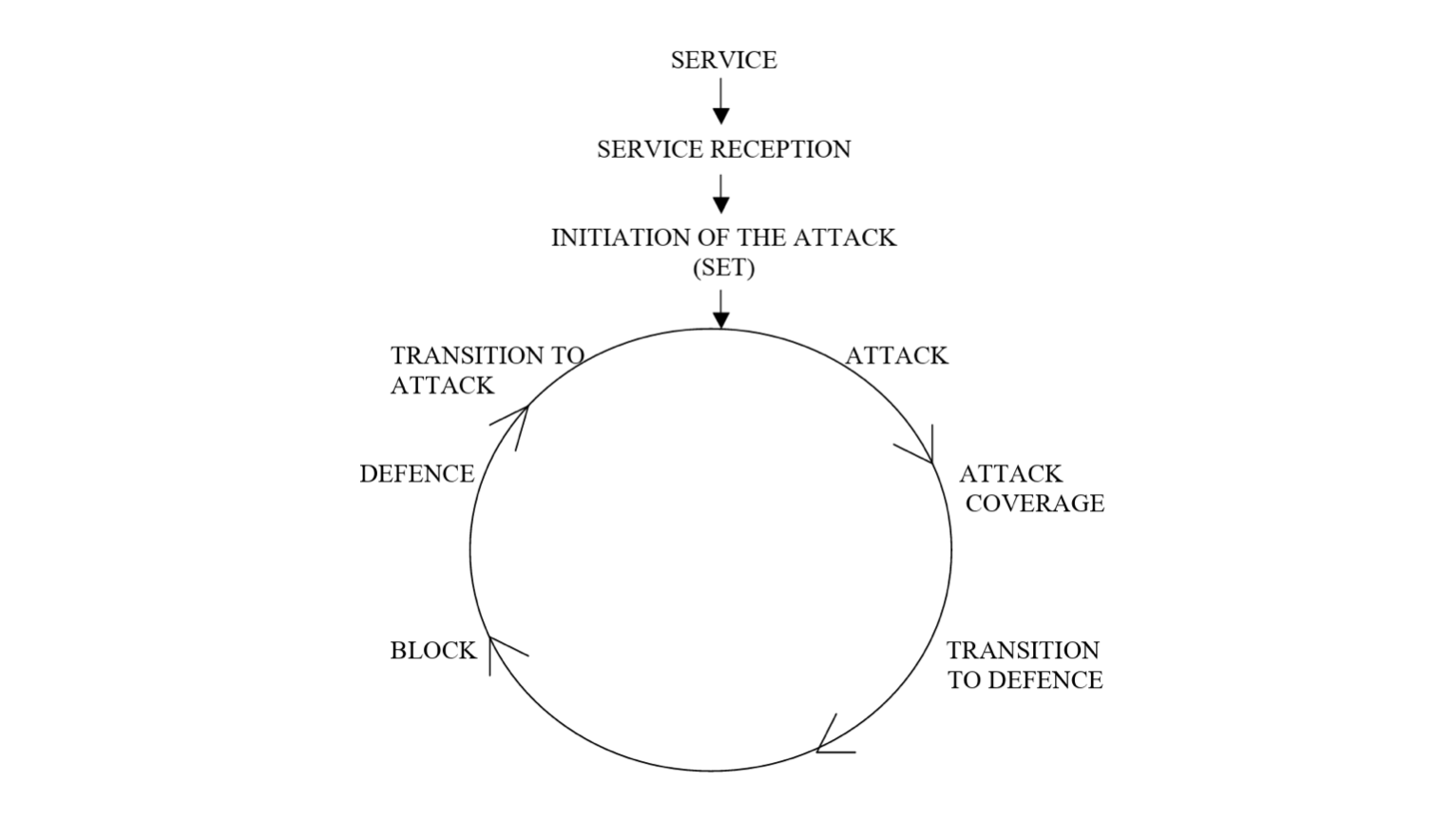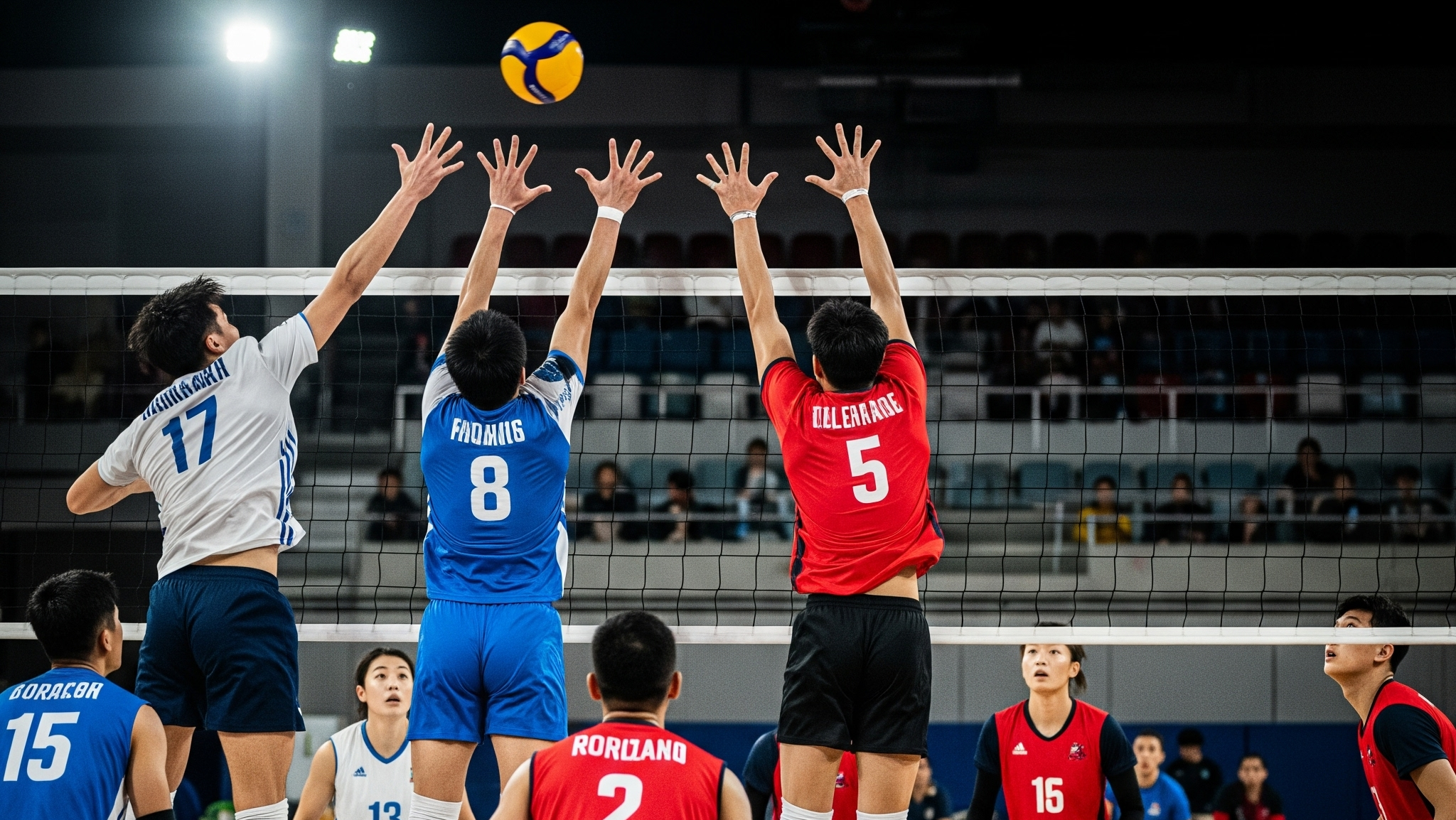Underhand Passing Makes Volleyball Unique
In most ball sports, players typically make contact with the ball using their hands or a piece of equipment like a racket or a bat. Volleyball, however, is made unique by the “underhand pass,” a technique performed with the forearms (the area between the elbow and the wrist).
Coordinating the eyes and forearms for an underhand pass is a very specific skill, similar to how a soccer player learns to control a ball with their chest.
My Perspective:
Many coaches have probably had the experience of seeing a beginner attempt an underhand pass and send the ball flying wildly, making it impossible to play a game. While a person has five fingers for precise, fine movements, the forearms cannot move as freely as the palms. Therefore, it’s crucial for players to learn to use their entire body to control the ball, not just their forearms.
The Rule of Rotation
The rule of rotation implies that the idea of a player mastering every position on the court to the same level strongly influences volleyball. For a long time, the goal was for all six starting players to be equally skilled in all aspects of the game. (This excludes the libero, who is not allowed to serve and only plays in the back row, with a primary role of accurate serve reception and strengthening the team’s organized defense.)
Coaches must effectively use the rotation rule by training players to be adaptable and play in both the front and back rows. At the start of a player’s development, the rotation rule is likely the highest priority. Another major effect of rotation is on how a coach designs a practice. Coaches want to create versatile players and spend time training all of their skills.
In reality, however, this is impossible. There isn’t enough time to train every player in every volleyball skill equally. Related to rotation, a coach’s role is to use the rules to specialize players and defeat the idea of the “all-around player.” This is a consistent idea for success in all sports: great specialization always equals great success.
My Perspective:
I think that in the early stages of learning volleyball, it’s important to practice every skill and experience every position. And within that experience, players can begin to develop the specialization that will allow them to thrive at a higher level.
I believe that to develop great players for the long term, a coaching philosophy should include a process like below.
1. Making players experience all positions and skills
2. understanding the player’s characteristics
3. enhancing the player’s specialization.
A Sport with Somewhat Complex Movement Skills
In volleyball, players move in every direction using a combination of flying, rolling, shuffling, side-stepping, and cross-stepping. A coach must work with players until these movements become second nature.
My Perspective:
Volleyball requires movement skills that are rarely seen in other sports. Experienced players can instinctively select and use the right movement for any situation.
For beginners or inexperienced players, this is difficult. It’s important to include movement drills in practice so they become ingrained in the body. However, coaches must be creative to ensure that the purpose of the drills is not just “to do the drill well” but to prepare for real-game situations.
A Sport with Two Unique Play Zones
Volleyball has two unique play zones.
Most sports are played in the middle zone—the area between the head and the knees. Volleyball, however, is played outside this zone, in both the low zone (between the knees and the floor) and the high zone (the player’s highest reach, up to 350cm or more from the floor).
Players are trained to “become friends with the floor” by using standard body recovery techniques like diving, rolling, and flying.
The high zone is where many of the plays occur, so volleyball players train to jump higher than athletes in other sports.
My Perspective:
I strongly feel that the need to play in extremely “low” positions in some situations and extremely “high” positions in others is what makes volleyball unique, but it also demands a high level of technique and physical ability from players. This also made me think about what kind of approach is needed to train players to compete at a high level in these two unique zones.
Volleyball Involves a Cyclical and Continuous Pattern

The mentality and mental state of players are fundamental values. The introduction of the “rally point system” has removed the constant tension from the spectators, but it has put pressure on the players to make valuable plays throughout the match to contribute to a win.
As a result, coaches who select players must pay attention to their mental characteristics, not just their athletic and physical abilities.
A stable resistance to stress and the ability to make valuable, winning plays throughout a match (especially in the late stages) are required values for every player.
My Perspective:
Some players perform better in a game than in practice, while others perform worse. The difference between these two types of players is almost certainly mental. It is one of the roles of a coach to uncover what creates this difference and to train players to be the former type. Since there is no quick-fix training for mental toughness, it’s important to consistently incorporate elements into daily practice that develop it.




